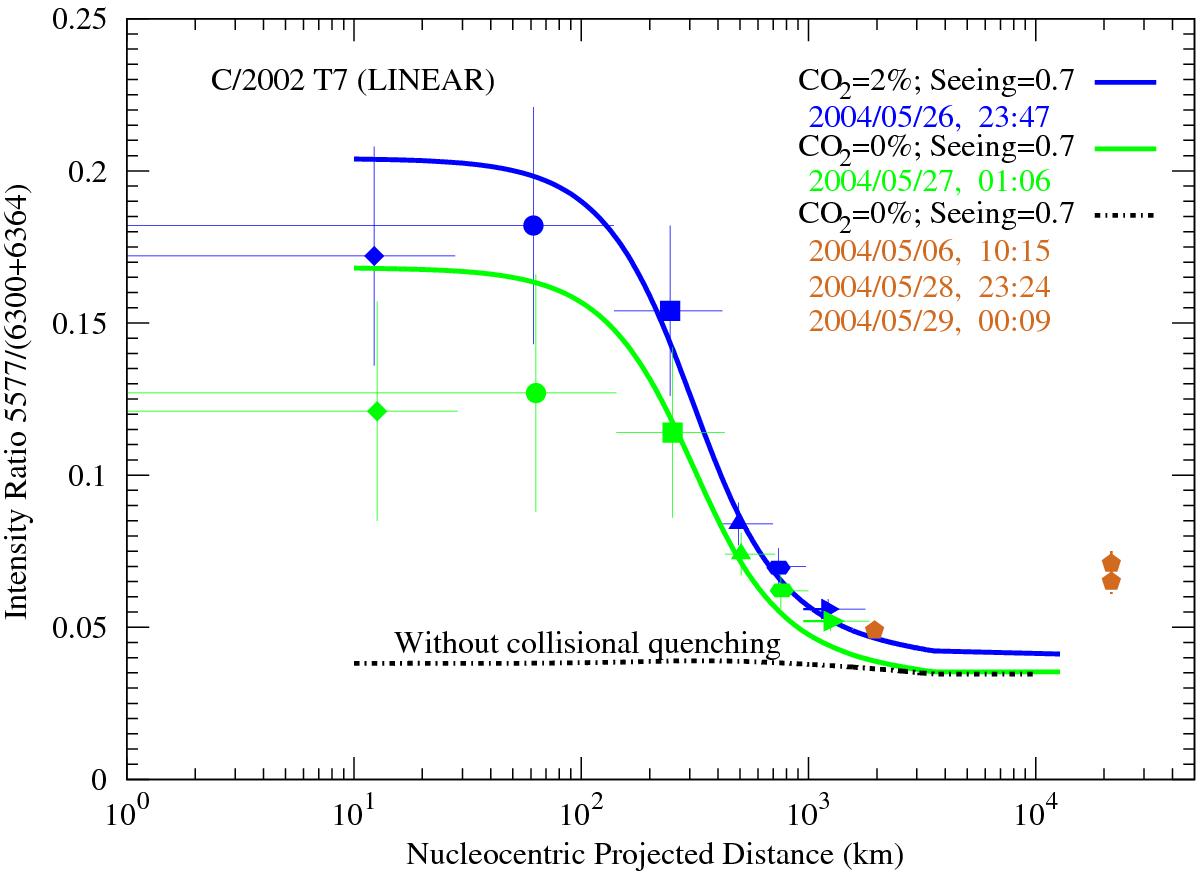Fig. 3

G/R ratio for each subslit and offseted spectrum for comet C/2002 T7 (LINEAR). The range of the nucleocentric distances covered by each point and the error on the G/R ratio are represented. The seeing is included in the x-errors and is indicated in km. It corresponds to the smallest size that can be resolved and explains the plateau found for the smallest spatial bin close to the nucleus. The G/R ratios as a function of the projected nucleocentric distance are plotted with solid curves. An H2O production rate of 5.2 × 1029 s-1 and a 5% CO relative abundance were used with different seeing values and different CO2 relative abundances. The fits give the CO2 relative abundance of the comet. Only data points that were not offset were considered to computate the G/R profile provided by the model. The black dash-dotted curve represents the calculated G/R ratio not accounting for collisional quenching with 0% CO2 relative abundance. The pentagon symbols are the data points for the offset observations.
Current usage metrics show cumulative count of Article Views (full-text article views including HTML views, PDF and ePub downloads, according to the available data) and Abstracts Views on Vision4Press platform.
Data correspond to usage on the plateform after 2015. The current usage metrics is available 48-96 hours after online publication and is updated daily on week days.
Initial download of the metrics may take a while.


